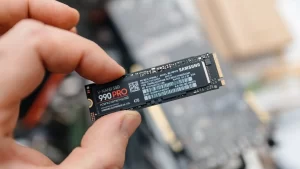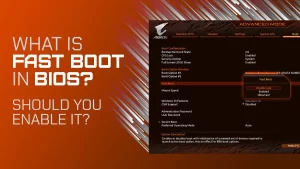Running multiple virtual machines (VMs) on a single PC is a powerful way to test software, simulate networks, or manage different OS environments. However, many users encounter system crashes, freezes, or reboots when attempting to operate more than one VM simultaneously. These crashes can be frustrating, particularly when you’re mid-task or relying on those environments for critical work.
Understanding Virtual Machine Resource Demands
Each VM you run acts like a full computer within your existing OS. It requires CPU power, memory (RAM), storage I/O, and sometimes GPU processing. Running one VM can already stretch resources on a mid-range PC; running several multiplies those demands.
Approximate Resource Use per VM (Basic Configuration):
| Resource | Single VM (Low Load) | Single VM (Moderate Load) | Multiple VMs (3-5) |
|---|---|---|---|
| RAM | 2–4 GB | 6–8 GB | 12–20+ GB |
| CPU Cores | 1–2 cores | 2–4 cores | 4–12 cores |
| Disk Usage | 10–30 GB | 30–60 GB | 100+ GB total |
| I/O Load | Low | Medium to High | High |
If your hardware can’t keep up with these demands—or if virtualization settings are misconfigured—your PC might freeze or crash entirely.
Common Reasons for Crashes When Running Multiple VMs
1. Insufficient Physical RAM
RAM is one of the most critical resources when running virtual machines. Each VM reserves a chunk of your physical RAM. If your total allocated memory exceeds what’s available, Windows may resort to paging or crash altogether.
Solution:
- Upgrade to at least 32 GB RAM for running 3 or more VMs with modern OSes.
- Avoid allocating 100% of RAM to VMs. Leave 4–6 GB free for your host system.
2. CPU Overload or Improper Core Allocation
Some users assign too many virtual CPU cores to each VM, leaving no resources for the host OS. If multiple VMs each request 4 cores on an 8-core system, for example, your CPU could bottleneck.
Solution:
- Use only 1–2 cores per VM unless needed.
- Do not exceed 70–80% of total cores for all combined VMs.
3. Disk I/O Bottlenecks
VMs require constant disk reads/writes. Running them from a mechanical HDD, or even a single SATA SSD, can cause serious I/O contention.
Solution:
- Use an NVMe SSD for optimal disk I/O.
- Store each VM on separate physical drives, if possible.
- Avoid enabling disk-intensive services (e.g., Windows indexing) on VMs.
4. Misconfigured Hypervisor Settings
Incorrect virtualization platform settings can lead to crashes. Common culprits include:
- Enabling nested virtualization unnecessarily
- Overcommitting CPU or RAM
- Running 32-bit guest OSes in a 64-bit-only configuration
Solution:
- Review hypervisor logs (VMware, VirtualBox, Hyper-V)
- Adjust resource allocation manually for each VM
- Turn off unnecessary virtualization options
Table: Quick Troubleshooting Checklist
| Issue | Cause | Fix |
|---|---|---|
| PC crashes when launching 3rd VM | Out of RAM | Lower RAM per VM or upgrade RAM |
| PC freezes after 10–15 minutes | CPU thermal throttling or overload | Improve cooling / reduce VM CPU use |
| VMs are slow and unstable | Disk I/O bottleneck | Use SSD / spread VMs across drives |
| Only one VM works properly | Host has limited cores or RAM | Reduce guest resource usage |
| VMs crash during startup | Corrupted VM configuration | Rebuild or re-import VM |
Advanced Solutions
1. Enable Intel VT-x or AMD-V in BIOS
These CPU extensions are crucial for virtualization. If disabled, your hypervisor might use software emulation, which is inefficient and error-prone.
- Reboot your PC and enter BIOS/UEFI
- Find Intel Virtualization Technology or AMD-V
- Enable it, save changes, and restart
2. Increase Pagefile Size
When RAM runs out, Windows uses the pagefile as virtual memory. If it’s too small or disabled, your system may crash.
- Go to System Properties > Advanced > Performance > Settings
- Under Virtual Memory, set a custom size:
- Initial: 8192 MB
- Maximum: 16384 MB (or higher)
3. Monitor Temperatures and Power Supply
Multiple VMs under load can increase power draw and heat generation. If your power supply or cooling system is inadequate, the system may shut down to prevent damage.
Use tools like HWMonitor, CoreTemp, or Open Hardware Monitor to check:
- CPU and GPU temperatures
- Voltage fluctuations
- Fan speeds
Optimizing for Better Multi-VM Performance
Recommended Hardware for 3–5 Stable VMs:
| Component | Minimum | Recommended |
|---|---|---|
| RAM | 16 GB | 32–64 GB |
| CPU | 6-core / 12-thread | 8-core+ (e.g., Ryzen 9, i9) |
| Storage | 1 TB SSD (NVMe preferred) | Separate SSDs or RAID setup |
| GPU (if required) | Basic is fine for CLI | Dedicated GPU for GUI-based VMs |
Final Notes: Avoiding Crashes in Production Setups
If you frequently work with multiple virtual machines (e.g., for software testing, labs, development), consider investing in a dedicated virtualization server or workstation. Cloud platforms like AWS, Azure, and VMware Cloud also offer scalable VM hosting if local performance becomes a bottleneck.
Additionally, always keep hypervisor software updated—many crash-related bugs are resolved in newer versions. For heavy-duty users, Type-1 hypervisors (like VMware ESXi or Proxmox) offer better resource isolation and performance than Type-2 (like VirtualBox or VMware Workstation).
Crashing when running multiple virtual machines is usually a symptom of resource exhaustion or configuration missteps. By understanding how VMs consume hardware resources and taking the time to balance allocation intelligently, most users can prevent crashes and ensure a stable, responsive host environment.
Whether you’re troubleshooting for the first time or fine-tuning an advanced setup, following these steps will give you control over your VM environment—and let your PC handle the load efficiently and reliably.



